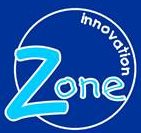Terry had just joined a motoring organisation. His job was to look after his part of a large fleet of leased vehicles. This was a job that he had done before for a similar organisation – so he hit the ground running. The first thing that caught his attention was the fact that the vehicles were managed using a T-card system.
For those of you that are unfamiliar with T-cards, they work a bit like this. First, they are made of card so that you can write information on them. They are T-shaped, with a very broad upright for the ‘T’ – this is where the bulk of the information goes. The horizontal part of the ‘T’ is where the overall description goes – this is the part that is visible when the T-card is placed in the rack along with all the others. There are ways of segregating the rack so that things that require attention at different points in time are readily accessible. It is, in essence, a manual scheduling and tracking system that relies on everything being visible at a glance. When they were first introduced, they were the bee’s knees and did a lot to revolutionise scheduling in all sorts of different environments. I used them myself and loved them. However, that was the 70’s and 80’s – and it was in the mid 90’s that Terry joined this motoring organisation.
He quickly realised that he could treat each vehicle as an appointment in Outlook. He could add notes whenever he wanted. He could set reminders so that jobs would present themselves on his terminal at the time that they needed to be done. And so the list of benefits rolled on. Without asking anyone’s permission, he set up Outlook on his terminal and tried it out. It worked perfectly.
It wasn’t long before one of his colleagues noticed that Terry had stopped using the T-cards. A quick enquiry indicated the alternative system on Outlook. Shortly after, the first early adopter was signed up. The rest of Terry’s colleagues quickly followed – well, the vast majority of them anyway. In fact, one of them suggested that Terry put his idea into the suggestions scheme that was running in the business at that time. He did so and shortly after found out that he had won a first-level prize – a cheque for £25 which would be awarded to him by his line manager.
A short while later, his boss invited him into his office and closed the door. He retreated behind his desk, retrieved an envelope from a drawer, and tossed it over to Terry. He opened the envelope and found a card and the cheque for £25. And in the cards were the following words, in bright green:
“Thank you for changing something that has worked perfectly well for the last seven years!”
And not content with writing it, his boss then repeated the words, dripping with the sort of tone that you would expect from that sort of comment. Great to see the esteem in which this individual held innovation – someone in a position of leadership as well. Ouch! However, Terry is an easy-going sort of chap and it was just like the proverbial water off a duck’s back. He left and got on with his day. Interestingly, the story didn’t end there. A couple of months after this incident Terry left the organisation and a few weeks after leaving, he got an A4 envelope through the post from his old employer. He was owed some back-pay and thought that this was it. In fact, it turned out that his Outlook idea had been automatically entered into the next round of the suggestions scheme and had won another prize. This time, the envelope contained genuine congratulations and a cheque for £250.
There are all sorts of things we can learn from this lovely story. However, the one that I would like to emphasise is that we shouldn’t let the dinosaurs spoil things for us. Just ignore them and get on with whatever it is that you are doing.
